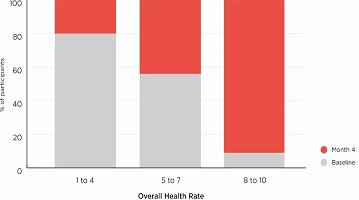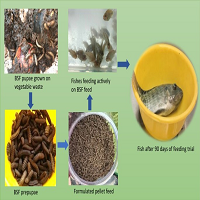1. Petry N, Olofin I, Hurrell RF, et al. The proportion of anemia associated with iron deficiency in low, medium, and high human development index countries: A systematic analysis of national surveys. Nutrients. 2016; 8(11): 693. doi: 10.3390/nu8110693
2. Miller JL. Iron deficiency anemia: A common and curable disease. Cold Spring Harb Perspect Med. 2013; 3(7): a011866. doi: 10.1101/cshperspect.a011866
3. Milman N. Iron and pregnancy: A delicate balance. Ann Hematol. 2006; 85(9): 559-565. doi: 10.1007/s00277-006-0108-2
4. National Center for Health Statistics. 2005-2006 National Health and Nutrition Examination Survey (NHANES). Website. http:// www.cdc.gov/nchs/nhanes/nhanes05_06.htm. Accessed June 13, 2017.
5. Milman N, Rosdahl N, Lyhne N, Jørgensen T, Graudal N. Iron status in Danish women aged 35-65 years: Relation to menstruation and method of contraception. Acta Obstetr et Gynecol Scand. 1993; 72(8): 601-605. doi: 10.3109/00016349309021150
6. Kc A, Rana N, Målqvist M, Jarawka Ranneberg L, Subedi K, Andersson O. Effects of delayed umbilical cord clamping vs early clamping on anemia in infants at 8 and 12 months: A randomized clinical trial. JAMA Pediatr. 2017; 171(3): 264-270. doi: 10.1001/jamapediatrics.2016.3971
7. Cao C, O’Brien KO. Pregnancy and iron homeostasis: An update. Nutr Rev. 2013; 71: 35-51. doi: 10.1111/j.1753-4887.2012.00550.x
8. Allen LH. Anemia and iron deficiency: Effects on pregnancy outcome. Am J Clin Nutr. 2000; 71(5): 1280s-1284s. doi: 10.1093/ajcn/71.5.1280s
9. Scholl TO. Iron status during pregnancy: Setting the stage for mother and infant. Am J Clin Nutr. 2005; 81: 1218S-1222S. doi: 10.1093/ajcn/81.5.1218
10. Bothwell TH. Iron requirements in pregnancy and strategies to meet them. Am J Clin Nutr. 2000; 72(Suppl 1): 257S-264S. doi: 10.1093/ajcn/72.1.257S
11. Milman N, Clausen J, Byg KE. Iron status in 268 Danish women aged 18-30 years: Influence of menstruation, contraceptive method, and iron supplementation. Ann Hematol. 1998; 77: 13-19. doi: 10.1007/s002770050405
12. Beard JL. Iron requirements in adolescent females. J Nutr. 2000; 130(Suppl 2): 440S-442S.doi : 10.1093/jn/130.2.440S
13. Chang SC, O’Brien KO, Nathanson MS, Mancini J, Witter FR. Hemoglobin concentrations influence birth outcomes in pregnant African-American adolescents. J Nutr. 2003; 133: 2348-2355. doi: 10.1093/jn/133.7.2348
14. Clancy KB, Nenko I, Jasienska G. Menstruation does not cause anemia: Endometrial thickness correlates positively with erythrocyte count and hemoglobin concentration in premenopausal women. Am J Hum Biol. 2006; 18: 710-713. doi: 10.1002/ajhb.20538
15. Dewey KG. Impact of breastfeeding on maternal nutritional status. Adv Exp Med Biol. 2004; 554: 91-100. doi: 10.1007/978-1- 4757-4242-8_9
16. Dewey KG, Cohen RJ. Does birth spacing affect maternal or child nutritional status? A systematic literature review. Matern Child Nutr. 2007; 3(3): 151-173. doi: 10.1111/j.1740-8709.2007.00092.x
17. Mei Z, Cogswell ME, Looker AC, et al. Assessment of iron status in US pregnant women from the National Health and Nutrition Examination Survey (NHANES), 1999-2006. Am J Clin Nutr. 2011; 93(6): 1312-1320. doi: 10.3945/ajcn.110.007195
18. CDC. Analytic and reporting guidelines. The National Health and Nutrition Examination Survey (NHANES). Atlanta, GA, USA: Center for Disease Control and Prevention; 2006
19. Fernández-Gaxiola AC, De-Regil LM. Intermittent iron supplementation for reducing anaemia and its associated impairments in menstruating women. Cochrane Database Syst Rev. 2011. doi: 10.1002/14651858.CD009218.pub2
20. Karakochuk CD, Murphy HM, Whitfield KC, et al. Elevated levels of iron in groundwater in Prey Veng province in Cambodia: A possible factor contributing to high iron stores in women. J Water Health. 2015; 13(2): 575-586. doi: 10.2166/wh.2014.297
21. Kurniali PC, Curry S, Brennan K, Velletri K, Schwartz KA, McCormack EM. Incidence of hospital acquired anemia. Blood. 2013; 122: 1700.doi:10.1182/blood.V122.21.1700.1700
22. Illich I. Medical Nemesis. New York, USA: Pantheon Books; 1975.
23. Koch CG, Li L, Sun Z, et al, Hospital-acquired anemia: Prevalence, outcomes, and healthcare implications. J Hosp Med. 2013; 8(9): 506-512. doi: 10.1002/jhm.2061







